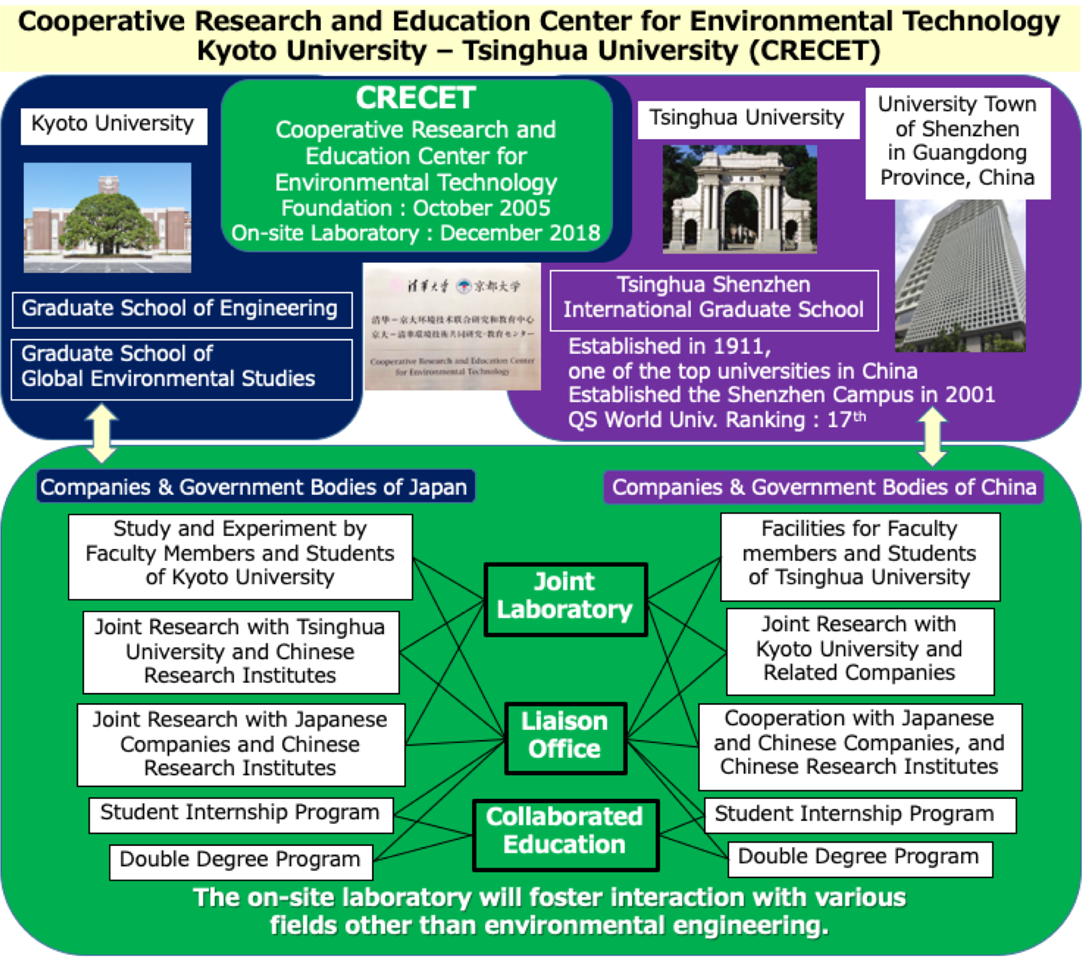Kyoto University, centered in Sakyo Ward, Kyoto, Japan, is one of the research universities representing Japan on the world stage. Recognized as one of Japanese finest universities, it has maintained “academic freedom” as its motto. Its forerunner was Kyoto Imperial University, founded in 1897. After World War II, the current Kyoto University was established, and became a National University Corporation in 2004. Currently, it has 10 faculties, 18 graduate schools, and 13 research institutions, and is a member of the Association of East Asian Research Universities and the Association of Pacific Rim Universities, which includes the top universities around the Pacific. In addition, it was recognized as a top-class university in the MEXT’s Top Global University Project. In the 2018 QS World University Rankings, Kyoto University was 35th in the world, and 2nd in Japan. As of 2018, it has 10 Nobel laureates, and its graduates have made major contributions to not only the academic but also the financial and political world.
Kyoto University On-site Laboratories
The on-site laboratories are established in cooperation with overseas universities and research institutions, with the aim of pursuing a variety of activities beneficial to the respective university; for example, active academic communication with overseas institutions, support for leading research, attracting the best international students, and strengthening cooperation with industry. They will enhance the foundation and system of Kyoto University, to ensure that it is competitive with the world’s best universities.
Double Master Degree Program Kyoto University – Tsinghua University
Students of the program will be enrolled in both universities, pursue an English-oriented curriculum, participate in internships, and be allowed to transfer credits. Their Master’s thesis will be examined by a committee composed of professors from both universities, and will ultimately receive the Double Master Degree from the two universities.
The program is designed to send students with a global perspective into society, where they will address not only regional environmental problems of Japan and China, but also world environmental issues. In addition, it is expected to train students to master three languages (Japanese, Chinese, and English), and the culture, customs, and traditions of Japan and China. It will provide a variety of benefits to students and environment-related companies of both countries.
Ultimately, it aims to make major contributions to the promotion of research and education in both member institutions; and as this echoes the aim of the on-site laboratories, the program and laboratories are expected to produce a synergetic effect.








